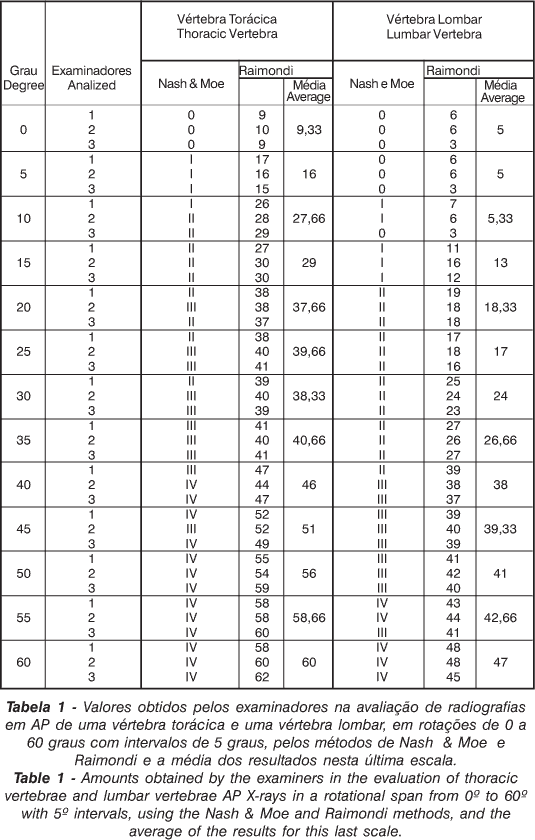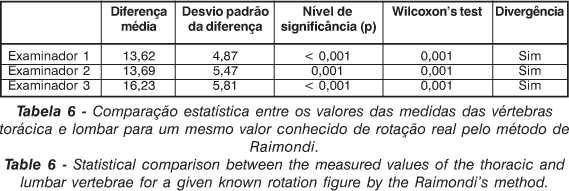The sensibility and precision of the Nash and Moe and Raimondi methods were evaluated in this study for the measurement of the rotation of the thoracic and the lumbar vertebra. Three spine surgeons evaluated, independently, the x-rays of a thoracic vertebra (T9) and of a lumbar vertebra (L2) with varying rotational degrees from 0º to 60º and established values in agreement with the Nash and Moe method and the Raimondi method. The agreement among the examiners as to a certain method, the variation of the measures obtained for the thoracic and the lumbar vertebra, starting from a same known actual rotation and the correlation between a known true value of vertebral rotation and its forecast prepared through the methods used in the study were perused. The results showed good agreement among the examiners for the Nash and Moe method, so much for the thoracic vertebra (average k = 0,66), as for the lumbar (average k = 0,80). Using the Raimondi method there was no significant difference among the examiners for the thoracic vertebra. However, there was a low reproducibility of the method for the lumbar vertebra. For a same rotation of the thoracic and lumbar vertebra the results were non-concordant for the method of Nash and Moe, and for the Raimondi method the values observed for the thoracic vertebra were significantly larger than the ones for the lumbar vertebra. The correlation between the true values and the estimated values for the Raimondi method for the thoracic vertebra showed that there was a significant difference produced in function of the rotation up to 20º degrees, however for the lumbar vertebra the obtained values were very close to the actual.

 Comparative study of the measurements of the vertebral rotation using Nash & Moe and Raimondi methods
Comparative study of the measurements of the vertebral rotation using Nash & Moe and Raimondi methods










